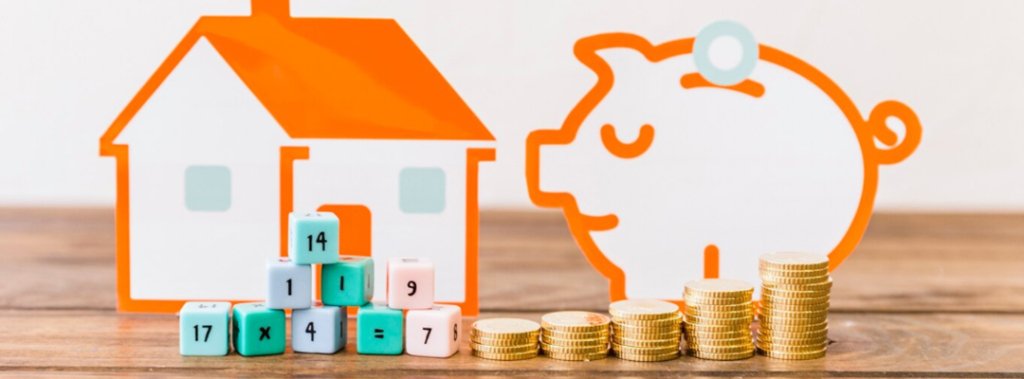Buying a dream home is a significant life milestone, a culmination of aspirations and hard work. However, the journey from dreaming to holding the keys can be fraught with financial anxieties if not navigated carefully. Effective home budgeting is not just about knowing how much you can afford; it’s about creating a roadmap to your ideal living space without compromising your financial well-being. This comprehensive guide will walk you through the essential steps to budgeting for a house, ensuring a smooth and stress-free path to homeownership.

Define Your Dream and Assess Your Needs
Before diving into numbers, take a moment to truly envision your dream home. Consider factors beyond aesthetics. Think about your lifestyle, future plans, and essential requirements.
- Location, Location, Location: Where do you envision yourself living? Consider proximity to work, schools, family, amenities, and transportation. Research property prices in your desired neighborhoods, as this will significantly impact your budget.
- Size and Type of Property: Do you need a sprawling villa, a cozy apartment, or a functional townhouse? Consider the number of bedrooms and bathrooms, living spaces, and any specific requirements like a home office or a garden. The size and type of property directly influence the cost of buying a house.
- Must-Haves vs. Nice-to-Haves: Differentiate between essential features and desirable extras. Prioritize your needs to stay within your budget. You can always consider upgrades later.
Understanding your needs and desires will provide a crucial framework for your home buying budget.
Honestly Evaluate Your Current Financial Situation

A realistic assessment of your current financial health is the cornerstone of effective house budgeting. Be honest and thorough in evaluating your income, expenses, and debts.
- Calculate Your Gross and Net Income: Determine your total income before taxes and deductions (gross income) and your income after deductions (net income). This will give you a clear picture of your available funds.
- Track Your Monthly Expenses: Meticulously track all your monthly expenses, including fixed costs like rent, loan payments, utilities, and variable costs like groceries, entertainment, and transportation. Several budgeting apps and spreadsheets can assist with this process. Understanding your spending habits is crucial for identifying areas where you can save.
- Assess Your Existing Debts: List all your outstanding debts, including credit card balances, student loans, car loans, and personal loans. Note the interest rates and minimum payments for each. High debt-to-income ratios can significantly impact your mortgage eligibility and affordability.
- Calculate Your Debt-to-Income (DTI) Ratio: This ratio compares your total monthly debt payments to your gross monthly income. Lenders use DTI to assess your ability to manage monthly payments. A lower DTI is generally favorable.

A clear understanding of your financial landscape will help you determine a realistic affordable home price range.
Also Read: Decoding Home Loan Options: A Beginner’s Guide to Finding Your Perfect Fit
Determine Your Affordable Home Price Range
Based on your income, expenses, and debts, you can now estimate how much you can realistically afford to spend on a new house. Several factors come into play here:
- The 28/36 Rule: This widely used guideline suggests that your monthly housing costs (including mortgage principal and interest, property taxes, and homeowner’s insurance) should not exceed 28% of your gross monthly income, and your total monthly debt payments (including housing costs) should not exceed 36% of your gross monthly income.
- Consider Down Payment Savings: The size of your down payment significantly impacts your mortgage amount and monthly payments. Aim for the largest down payment you can comfortably afford, as it can lead to better interest rates and lower monthly costs.
- Factor in Closing Costs: Beyond the house price, remember to budget for closing costs, which can include appraisal fees, loan origination fees, title insurance, and legal fees. These costs can amount to 2-5% of the purchase price.
- Account for Future Homeownership Costs: Don’t just focus on the initial purchase. Factor in ongoing homeownership costs such as property taxes, homeowner’s insurance, potential HOA fees, maintenance, and repairs. These expenses can add significantly to your monthly outgoings.
- Get Pre-Approved for a Mortgage: Obtaining mortgage pre-approval from a lender is a crucial step. It gives you a clear understanding of how much a lender is willing to lend you based on your financial profile. This helps you narrow down your house search to properties within your mortgage affordability range.
By carefully considering these factors, you can establish a realistic home affordability range that aligns with your financial capabilities.
Plan for Your Down Payment
Saving for a down payment is often the biggest hurdle for aspiring homeowners. Develop a strategic savings plan to reach your goal.

- Set a Savings Target: Based on your affordable home price range, determine the amount you need for a down payment. Aim for at least 20% if possible to avoid private mortgage insurance (PMI).
- Create a Dedicated Savings Account: Open a separate savings account specifically for your down payment. This helps you track your progress and avoid dipping into these funds for other purposes.
- Automate Your Savings: Set up automatic transfers from your checking account to your down payment savings account each month. Even small, consistent contributions can add up over time.
- Explore Different Savings Strategies: Consider various savings methods, such as reducing discretionary spending, selling unwanted items, or exploring investment options (with caution and understanding the risks involved).
- Look into Down Payment Assistance Programs: Research first-time homebuyer programs and down payment assistance programs offered by government agencies or non-profit organizations. These programs can provide grants or low-interest loans to help with your down payment.
A well-defined down payment savings plan will bring you closer to realizing your homeownership dreams.
Understand Mortgage Options and Costs
Navigating the world of mortgages can be complex. Understanding the different options and associated costs is crucial for making informed decisions.

- Research Different Mortgage Types: Explore various mortgage options, such as fixed-rate mortgages, adjustable-rate mortgages (ARMs), FHA loans, VA loans, and conventional loans. Each type has its own advantages and disadvantages.
- Compare Interest Rates and Fees: Shop around for the best mortgage rates and fees from different lenders. Even a small difference in interest rates can save you thousands of dollars over the life of the loan. Pay close attention to origination fees, points, and other charges.
- Understand Loan Terms: Familiarize yourself with different loan terms (e.g., 15-year, 20-year, 30-year). Shorter terms mean higher monthly payments but lower overall interest paid.
- Factor in Property Taxes and Homeowner’s Insurance: Remember that your monthly mortgage payment typically includes principal, interest, property taxes, and homeowner’s insurance (PITI). Get estimates for property taxes in your desired areas and shop for competitive homeowner’s insurance quotes.
- Consider Private Mortgage Insurance (PMI): If your down payment is less than 20%, lenders typically require you to pay PMI, which protects them if you default on the loan. Factor this additional monthly cost into your budget.
Understanding mortgage options and their associated housing costs is essential for long-term financial stability as a homeowner.
Factor in Ongoing Homeownership Costs
Your financial responsibilities don’t end once you close on your new home. Be prepared for ongoing expenses.
- Property Taxes: These are typically paid annually or semi-annually and are based on the assessed value of your property. Tax rates vary by location.
- Homeowner’s Insurance: This protects your property against damage or loss from events like fire, storms, or theft.
- Homeowners Association (HOA) Fees (if applicable): If you buy a property in a community with an HOA, you’ll likely have to pay monthly or annual fees to cover the cost of maintaining common areas and amenities.
- Maintenance and Repairs: Budget for regular maintenance tasks (e.g., lawn care, HVAC servicing) and unexpected repairs (e.g., plumbing issues, appliance breakdowns). Experts recommend setting aside 1-3% of your home’s value annually for these costs.
- Utilities: Factor in monthly utility bills such as electricity, gas, water, and trash collection. These costs can vary depending on your location and usage.
- Potential for Increased Expenses: Be prepared for potential increases in property taxes, insurance premiums, and utility costs over time.
Accurately budgeting for homeownership costs beyond the mortgage payment is crucial for avoiding financial strain.
Create a Realistic and Flexible Budget

Once you have a clear understanding of all the costs involved, create a detailed and realistic home budget.
- Use a Budgeting Tool: Utilize budgeting apps, spreadsheets, or traditional pen and paper to track your income, expenses, and savings goals.
- Allocate Funds for Each Category: Assign specific amounts for your mortgage payment, property taxes, insurance, HOA fees, maintenance, utilities, and other living expenses.
- Prioritize Needs Over Wants: Ensure your essential housing costs are covered before allocating funds to discretionary spending.
- Build in a Buffer: Include a contingency fund in your budget for unexpected expenses or emergencies. This will provide a financial safety net.
- Review and Adjust Regularly: Your financial situation and housing costs may change over time. Review your budget regularly (at least annually) and make adjustments as needed.
A well-structured and flexible home buying budget will empower you to make informed financial decisions throughout the homeownership journey.
Stick to Your Budget and Avoid Overspending

Creating a budget is only half the battle. Discipline and commitment are essential for sticking to it and avoiding the temptation to overspend.
- Track Your Spending Diligently: Monitor your expenses regularly to ensure you are staying within your allocated limits.
- Resist the Urge to Buy More Than You Can Afford: Don’t let emotions or external pressures lead you to purchase a home beyond your budget. Remember your long-term financial goals.
- Be Prepared to Make Sacrifices: Achieving your dream home may require making some sacrifices in your current spending habits.
- Seek Professional Financial Advice if Needed: If you feel overwhelmed or unsure about any aspect of the home buying budget process, don’t hesitate to consult with a qualified financial advisor.
By adhering to your house budget, you can navigate the real estate market with confidence and secure your financial future as a homeowner.
Conclusion: Paving the Way to Your Dream Home with Smart Budgeting

Budgeting for your dream home is not just a financial exercise; it’s an act of empowerment. By taking the time to understand your financial situation, define your needs, and plan meticulously, you can transform the often-stressful process of buying a house into a confident journey towards your aspirations. Remember that a well-thought-out and consistently followed home budget is the key to unlocking the door to your dream home and achieving long-term financial freedom and security. Start planning today, and pave the way for a brighter, more secure future in your very own new house.

